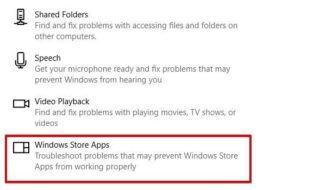Contents
Why Tech Teams Thrive with Standardization
Standardization is a method of creating consistency and quality throughout an organization. When things are always done the same way, it reduces the potential for error and increases the quality of the output.
For example, businesses that get audited for compliance usually have standardized systems for handling documents and contracts to ensure they pass those audits. Any deviation risks failure, which can result in fines, at the very least.
For tech teams, standardization increases productivity, reduces costs, and supports smooth tech operations. Without standardization, workers end up wasting time and payroll dollars.

Standardization streamlines IT services
Streamlining IT services for employees is vital. Each issue should be approached in the same manner to ensure consistent resolution. This should be done in the most efficient way possible.
When someone has an issue they need to resolve, it’s not practical to provide support over email. It makes more sense to use a help desk with a ticketing system. However, even this has drawbacks and can take up quite a bit of your IT team’s time. For instance, your tech team will end up spending hours helping employees fix issues that could be resolved on their own, if they had the right resources.
Traditional help desks don’t really streamline IT support. Part of efficient standardization involves using AI. For instance, an AI-powered ITSM platform will streamline and standardize the process of managing and delivering IT services to your internal team. For instance, you can integrate collaboration and communication platforms, like Slack, with this type of platform, and AI-powered automation will assign and classify tickets upon submission.
With a powerful ITSM platform, employees can find fast solutions to their problems without having to involve a live agent. This means your IT team will be free to handle urgent problems rather than tackling the same, repetitive issues that can be resolved through automation.
Standardization eliminates frustration
There’s a common scenario tech support teams face that demonstrates why even tools should be standardized. Say employees are allowed to use their own device for work. Some people use Macbooks, while others use Windows laptops, and a few just rely on a tablet or smartphone. For antivirus software, some people have McAfee, others use Norton, and Mac users run Avast. A handful of people use a VPN to access the network, but most use a remote desktop.
You might think that as long as everyone can access the network and share files, it doesn’t matter what tools they use. That’s true in theory, at least until they need support to update, replace, or use something new.
In that case, your tech team will have to help each person individually, and they’ll have to know each device, operating system, and software application to provide support. This can be a nightmare, especially if they’re using a device that isn’t compatible with new software they need to use.
When you standardize the tools employees use, you eliminate a massive support burden that would otherwise frustrate your IT support team.
Standardization delivers better products
Consistency is a form of quality because it creates reliability. For example, a company that develops software applications should have a standardized way of integrating security into the process each and every time, using DevSecOps. Without standardization, the end result may vary. One application might be secure, while another is full of vulnerabilities. When software delivery is inconsistent, customers will notice and post negative reviews, which will tank their reputation and deter new customers.
Standardizing IT processes creates a uniform product or service every time. This, in turn, creates satisfied customers who will say good things about your company online.
Other benefits of standardization include:
· Reduced training costs and time. Whether your tech team is training new IT hires or supporting the rest of the team, standardizing your training processes reduces the time it takes to train, saving money.
· Fewer compatibility issues. When systems and tools are the same, you can implement software across all devices without having to worry about that one employee running Linux who needs a special application. It’s also easier to troubleshoot and replace parts.
· Better business continuity. Standardizing your backup system will ensure all files get backed up. For instance, the standard might be for employees to store files on the F: drive under a folder with a specific name. With this standard, nobody’s files will be missed.
Start standardizing your tech team
If you haven’t already, work with your tech team to create operational standards that will streamline their efforts to produce optimal results. Doing this will support your business, your teams, and your customers or clients.



